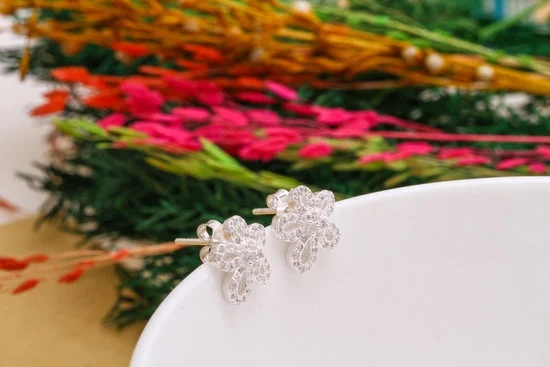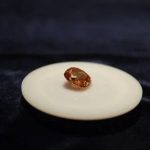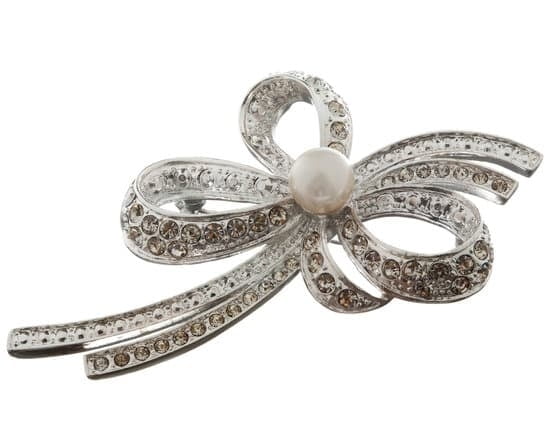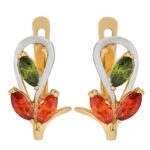Fashion jewelry has always been a key element in completing an outfit, adding a touch of glamour and personality to any ensemble. One material that has gained significant popularity in the world of fashion jewelry is resin.
Resin has become a trendy material due to its unique qualities and versatility, allowing designers to create statement pieces and delicate accessories. In this article, we will explore why fashion jewelry charges a premium for resin and delve into the craftsmanship, design process, sourcing of materials, and marketing strategies that contribute to the higher price tags.
But first, let’s look at what precisely is considered fashion jewelry. Fashion jewelry, also known as costume or imitation jewelry, refers to accessories made from non-precious metals and materials but designed to mimic fine or precious jewelry. These pieces are often more affordable than their high-end counterparts but can still exude elegance and style. Resin, one of the popular materials used in fashion jewelry today, has played a significant role in revolutionizing the industry.
Resin’s rise in popularity can be attributed to its aesthetic appeal and ability to offer an array of colors, patterns, and designs. Despite its relatively recent surge in popularity within the fashion industry, resin has been used in various forms throughout history for both ornamental and practical purposes.
From ancient times when Egyptians crafted translucent amulets using natural resins, such as amber or copal; to the Art Deco movement of the 1920s where Bakelite resin was utilized for bold statement pieces – resin has consistently captivated artisans with its endless possibilities in creating unique jewelry designs.
The allure of resin in fashion jewelry
Resin is a material that has gained significant popularity in the fashion industry, especially when used in the creation of jewelry. The allure of resin lies in its unique aesthetic appeal and versatility, allowing designers to create stunning pieces that stand out from traditional metal or gemstone jewelry. Resin offers a wide range of colors, patterns, and designs, making it a favorite among fashion jewelry enthusiasts.
One of the main reasons why resin has become so popular in fashion jewelry is due to its ability to create unique and eye-catching pieces. Resin jewelry has a distinct appearance that is unlike any other material. It often has a glossy or transparent finish, which can give it a sleek and modern look.
The nature of resin allows for various colors and patterns to be mixed together, creating intricate designs and captivating visual effects. Whether it’s bold statement pieces or delicate accessories, resin can be shaped and molded into countless forms to suit different styles and preferences.
Crafting resin jewelry involves intricate processes that require expertise and skill. Artisans must have knowledge of mixing the resin properly to achieve the desired consistency and color. Pouring the resin into molds or onto surfaces also requires precision to ensure an even distribution without any imperfections.
Various techniques and tools are utilized during the creation process, such as embedding materials within the resin or adding metallic pigments for additional effects. The craftsmanship involved in manipulating resin contributes to its higher price point compared to other materials used in fashion jewelry.
In addition to craftsmanship, sourcing high-quality materials is essential for creating exceptional resin jewelry. Not all resins are equal; some are low-grade while others offer superior durability and aesthetic appeal. Fashion jewelry brands aim to use high-grade resins that provide longevity without compromising on design or quality. Sourcing these premium materials can be costlier than opting for cheaper alternatives but guarantees a finished product that meets customer expectations.
The allure of resin in fashion jewelry stems from its unique aesthetics, versatility, intricate craftsmanship, and the sourcing of quality materials. These factors contribute to the higher price tag associated with resin jewelry compared to other materials commonly used in fashion accessories. The next section will delve into the details of creating resin jewelry, including the design process and the time-consuming nature of its production.
The craftsmanship and skill involved in creating resin jewelry
Resin jewelry has gained immense popularity in the fashion industry, thanks to its unique aesthetic appeal and versatility. However, what many may not realize is the level of craftsmanship and skill required to create these stunning pieces. Crafting resin jewelry is a meticulous process that involves mixing, pouring, and manipulating the resin with great precision.
The process of creating resin jewelry begins with selecting high-grade resin that not only ensures durability but also enhances the overall aesthetic appeal. Artisans must carefully measure and mix the resin with colorants or pigments to achieve desired hues and shades. The mixture is then poured into molds or onto surfaces, where it undergoes a curing process that hardens the material.
Artisans use various techniques and tools during this process to create unique designs. They may incorporate different materials such as dried flowers, glitter, or even metals into the resin for added visual interest. Additionally, special techniques like layering or swirling are employed to achieve stunning patterns and depth in the finished piece.
The skill involved in creating resin jewelry lies not only in mastering the technical aspects but also in harnessing creativity to produce distinctive designs. From conceptualizing an idea to bringing it to life, artisans need a keen eye for detail and an understanding of current trends and consumer preferences. Each step requires patience, expertise, and a deep passion for craftsmanship.
Creating resin jewelry is undoubtedly time-consuming. Multiple stages are involved-from preparing the resin mixture to allowing it to cure-and each stage requires careful attention. Artisans must monitor every detail throughout the process to ensure a flawless final product. This dedication reflects in their workmanship and contributes to the value of each unique piece of resin jewelry on the market today.
Sourcing quality materials for resin jewelry
When it comes to creating resin jewelry, the process begins with sourcing high-quality materials. The cost and availability of resin and other materials significantly impact the overall pricing of fashion jewelry. In order to ensure durability and aesthetic appeal, artisans rely on using high-grade resin.
Resin is a crucial component in creating resin jewelry due to its versatility and ability to be shaped into various forms. However, not all resins are created equal. High-grade resin is often pricier than lower-quality alternatives, as it offers better clarity, strength, and UV resistance. Additionally, high-grade resin allows for enhanced color pigmentation and reduces the risk of yellowing over time.
While resin may be the star of the show in resin jewelry, it is important to note that other materials play a supporting role. This can include metals for findings (such as clasps or earring hooks), gemstones or crystals for embellishments, and molds or settings for creating different shapes or sizes. The quality and cost of these additional materials also contribute to the overall price of resin jewelry.
Aside from the raw materials themselves, artisans must carefully consider their sourcing options for other supplies used in the creation process. These can include mixing cups, stirring sticks, brushes, protective gear, and specialized tools like heat guns or pressure pots. The use of quality tools ensures accuracy when mixing and pouring the resin – a crucial step in achieving desired results.
Designing and creating unique resin jewelry pieces
Resin jewelry has gained significant popularity in the fashion industry due to its unique aesthetic appeal and versatility. Designers are drawn to resin because it allows for a wide range of colors, patterns, and designs that can be incorporated into statement pieces or delicate accessories. In this section, we will delve into the process of designing and creating these distinctive resin jewelry pieces.
The design process behind resin jewelry begins with an initial concept. Designers envision the style, shape, and color scheme they want to achieve. This is followed by meticulous planning and sketching to bring their ideas to life. Once the designs are finalized, skilled artisans start working on crafting the jewelry.
Creating resin jewelry involves a combination of artistry and technical expertise. The artisan starts by mixing the resin with any desired pigments or additives to achieve the desired color and effect. This mixture is then carefully poured into molds or onto surfaces where it is manipulated with various tools such as brushes or sticks.
Artisans employ different techniques and methods to manipulate the resin and create unique patterns or effects. Some popular techniques include marbling, embedding objects within the resin, or layering different colors for a multi-dimensional look. These techniques require precision and an understanding of how resin behaves under different conditions.
Once the resin has cured, it is meticulously shaped, sanded, polished, and assembled into finished jewelry pieces. Attention to detail is crucial throughout this process to ensure a smooth finish without imperfections or rough edges. The final product showcases the skill and craftsmanship involved in creating beautiful resin jewelry.
| Process | Description |
|---|---|
| Mixing and pouring | Evaluating Mixture Proportions as per Design Requirements |
| Manipulation and shaping | Using specialized tools to create patterns, embed objects, or layer colors |
| Curing | Allowing the resin to harden and solidify |
| Sanding and polishing | Achieving a smooth and glossy finish on the jewelry pieces |
| Assembly | Piecing together different resin components to create the final jewelry piece |
The creativity and innovation required in designing resin jewelry are crucial aspects of its appeal. Designers constantly push boundaries with new techniques, materials, and concepts to create distinctive pieces that capture the attention of consumers. This continuous exploration of design possibilities ensures that resin jewelry remains fresh, exciting, and on-trend.
Trends and consumer preferences also play a significant role in shaping the designs of resin jewelry. From vibrant colors to unique shapes or themed collections, designers closely follow the latest fashion trends while infusing their artisanal skills into each piece. It is this fusion of design expertise and market sensibility that makes resin jewelry highly sought-after by fashion-conscious individuals.
Time-consuming nature of creating resin jewelry
Resin jewelry is not only aesthetically appealing but also requires a significant amount of time and effort to create. The intricate process of making resin jewelry involves several steps, as well as the expertise and skill of artisans. By delving into the time-consuming nature of creating resin jewelry, we can gain a greater appreciation for the craftsmanship involved in producing these unique pieces.
Creating resin jewelry begins with mixing and pouring the resin. This process requires precision and attention to detail to ensure that the mixture is evenly distributed and free from air bubbles. Artisans often spend hours carefully measuring and mixing different pigments, dyes, or other materials to achieve the desired color or effect. Once the resin is mixed, it needs to be poured into molds or onto surfaces, which can be a delicate process in itself.
After pouring, artisans must manipulate the resin to create desired shapes or designs. This may involve using tools such as tweezers or toothpicks to move or arrange components within the resin, adding layers or texture, or even embedding other materials such as dried flowers or glitter. Each manipulation requires patience and skill to ensure that the final result meets the artist’s vision.
Once the design is complete, the resin needs time to cure and set properly. This can take anywhere from several hours to days depending on various factors such as temperature and humidity levels. During this curing period, artisans must carefully monitor their work for any imperfections that may need to be sanded out or fixed before proceeding.
The time-consuming nature of creating resin jewelry extends beyond individual pieces; it also applies to mass production settings where artisans work on multiple projects simultaneously. Each step of the process requires careful coordination and meticulous attention to detail to maintain consistency across all pieces.
Marketing and branding of resin jewelry
Marketing and branding play a crucial role in the pricing of fashion jewelry, including resin pieces. Resin jewelry brands strategically position their products as luxury or high-end items to justify their higher price points. The branding of resin jewelry often involves creating an image of exclusivity, craftsmanship, and artistic beauty.
One way that brands market resin jewelry as premium items is by emphasizing the quality of materials used. High-grade resin is sought after for its durability, clarity, and ability to mimic the look of precious gemstones. This attention to quality ensures that resin jewelry pieces maintain their aesthetic appeal over time, further justifying their higher price tags.
Another aspect of marketing resin jewelry is the influence of fashion influencers and celebrities. When well-known figures are seen wearing a particular brand’s resin jewelry, it can create a sense of desirability among consumers. Influencers and celebrities can help elevate the perceived value of resin jewelry by associating it with style, sophistication, and trendiness.
Brands also invest in visually appealing packaging and presentation to enhance the overall luxury experience associated with resin jewelry. Packaging plays a vital role in capturing the attention of potential buyers and conveying the brand’s identity. It also serves as a means of protection during transportation and storage, ensuring that customers receive their purchased items in immaculate condition.
Overall, marketing and branding efforts contribute significantly to the pricing strategy of resin jewelry. By positioning their products as exclusive, high-quality accessories endorsed by fashion influencers and packaged meticulously, brands create an atmosphere that justifies the premium prices charged for these unique pieces.
| Marketing Strategies | Impact |
|---|---|
| Positioning as luxury or high-end items | Create an image of exclusivity and craftsmanship |
| Emphasizing quality materials | Justify higher price points and ensure durability |
| Influencer and celebrity endorsements | Create desirability among consumers and elevate perceived value |
| Visually appealing packaging and presentation | Enhance luxury experience and protect product integrity |
Price breakdown and factors influencing the cost of resin jewelry
When it comes to pricing fashion jewelry made with resin, there are several factors that contribute to the final cost. Analyzing the price breakdown can help us understand why resin jewelry commands a higher price point.
Firstly, overhead costs play a significant role in determining the price of resin jewelry. These costs include labor, design, marketing, and packaging expenses. Skilled artisans spend hours meticulously crafting each piece of resin jewelry by hand, which adds to the overall labor costs. The design process involves creativity and innovation to produce unique and distinctive designs that appeal to consumers. Additionally, investing in effective marketing strategies and high-quality packaging materials further add to the overhead costs.
Moreover, the sourcing of quality materials also affects the pricing of resin jewelry. While resin itself might not be an expensive material, using high-grade resin is crucial for both durability and aesthetic appeal. Sourcing top-notch materials ensures that the finished product meets quality standards, which can drive up the costs involved in creating resin jewelry.
Furthermore, market demand and profit margins are key factors influencing pricing decisions for fashion jewelry made with resin. If a certain style or design becomes highly popular or trendy, brands may adjust their prices accordingly to meet the increased demand. Profit margins also come into play when determining pricing strategies for resin jewelry; brands need to ensure they are able to cover their overhead costs while making a reasonable profit.
Conclusion
In conclusion, resin jewelry holds a significant value and appeal in the fashion industry for several reasons. From its unique aesthetic appeal to the craftsmanship and skill involved in its creation, resin jewelry stands out as a versatile and distinctive material. The allure of resin lies in its ability to create a wide range of colors, patterns, and designs, allowing for statement pieces or delicate accessories that capture attention.
Crafting resin jewelry requires expertise and a meticulous process. Artisans must master the art of mixing, pouring, and manipulating the resin to achieve desired shapes and effects. Various techniques and tools are utilized to bring these designs to life, showcasing the skill and precision needed to create stunning resin jewelry pieces.
In addition to craftsmanship, sourcing high-quality materials is essential for producing resin jewelry with durability and aesthetic appeal. The availability and cost of resin can vary depending on its grade, impacting the final pricing of these pieces. Furthermore, designers must stay attuned to trends and consumer preferences in order to create unique designs that resonate with customers.
The time-consuming nature of crafting resin jewelry cannot be overlooked. As a labor-intensive process that involves multiple steps and stages, artisans devote extensive time and effort into perfecting each piece. This level of attention to detail is what makes resin jewelry truly remarkable.
Marketing and branding also play a crucial role in positioning resin jewelry as luxury or high-end items. By leveraging branding strategies and aligning themselves with fashion influencers or celebrities who appreciate the beauty of resin jewelry, brands can further enhance the desirability of these pieces.
Frequently Asked Questions
Is selling resin jewelry profitable?
The profitability of selling resin jewelry can vary depending on various factors. One important factor is the quality and uniqueness of your resin jewelry pieces. If you create beautiful, well-crafted designs that capture the attention of customers and stand out from the competition, it can increase the profitability of your business.
Additionally, factors such as effective marketing strategies, target audience, and market demand also play a role. It’s crucial to research and analyze the market to understand if there is a demand for resin jewelry and what price range customers are willing to pay. By considering all these elements and developing a solid business plan, selling resin jewelry has the potential to be profitable.
How much should I charge for my resin art?
Determining how much to charge for your resin art involves several considerations. Firstly, assess the overall cost involved in creating each piece. This includes materials like resin, dyes, molds, and any additional components used in your artwork. Next, consider the time invested in designing and creating each piece as well as any associated preparation or finishing work.
It’s essential to fairly compensate your skill and effort while still maintaining competitive pricing relative to other similar products available in the market. Finally, research how much similar resin art pieces are being sold for by other artists or competitors within your target market. By combining these factors together, you can establish a pricing structure that reflects the value of your work while remaining attractive to potential buyers.
What are the cons of resin jewelry?
Despite its many advantages, there are also cons associated with resin jewelry that are important to consider before venturing into this business niche. One drawback is that working with resin requires specific safety precautions due to its toxic nature during certain stages of production (e.g., when mixing or curing). Proper ventilation and protective equipment must be utilized consistently to avoid health issues from exposure to fumes or skin contact with uncured resin.
Another con is that resin jewelry can be relatively delicate compared to other materials like metal or gemstones, making it more prone to scratches, cracks, or discoloration over time if not handled and stored properly. Additionally, the curing process can be influenced by factors such as humidity or temperature, which can result in inconsistent outcomes. It’s important to be aware of these limitations and communicate them transparently with customers to manage their expectations.

Welcome to my jewelry blog! My name is Sarah and I am the owner of this blog.
I love making jewelry and sharing my creations with others.
So whether you’re someone who loves wearing jewelry yourself or simply enjoys learning about it, be sure to check out my blog for insightful posts on everything related to this exciting topic!





